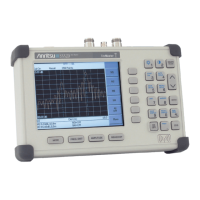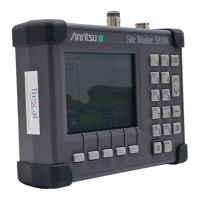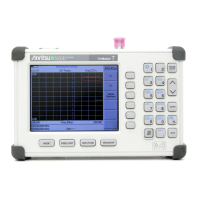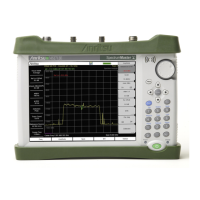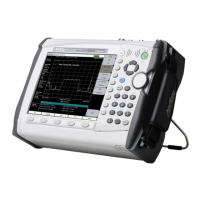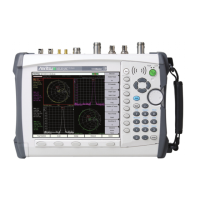S331L UG PN: 10580-00321 Rev. M 3-7
Cable and Antenna Measurements 3-3 Overview
The second common Line Sweeping measurement is Cable Loss
(Figure 3-6 on page 3-8). This is a measure of how much smaller the
output power of a signal is compared to the input power. The loss comes
from heat and leakage. Cable manufacturers will specify the loss per
foot or meter at different frequencies and may call it attenuation.
The Site Master has loss specifications for several cable types.
The Cable Loss measurement is also typically a Pass/Fail measurement
and requires a short or open at the cable end. This is a typical
measurement specified on new installations or main transmission line
replacement but is not typically tested on existing systems.
1 Failure at Jumper (1.22 m)
2 Possible Failure at 8.31 m
3 Example of Good Connector (~30 dB)
4 Precision Load Connected at End of Cable (24.65 m)
Figure 3-5. Distance to Fault Measurement Shows the Failing
Components
Note Cable Loss cannot be measured with an antenna connected.
